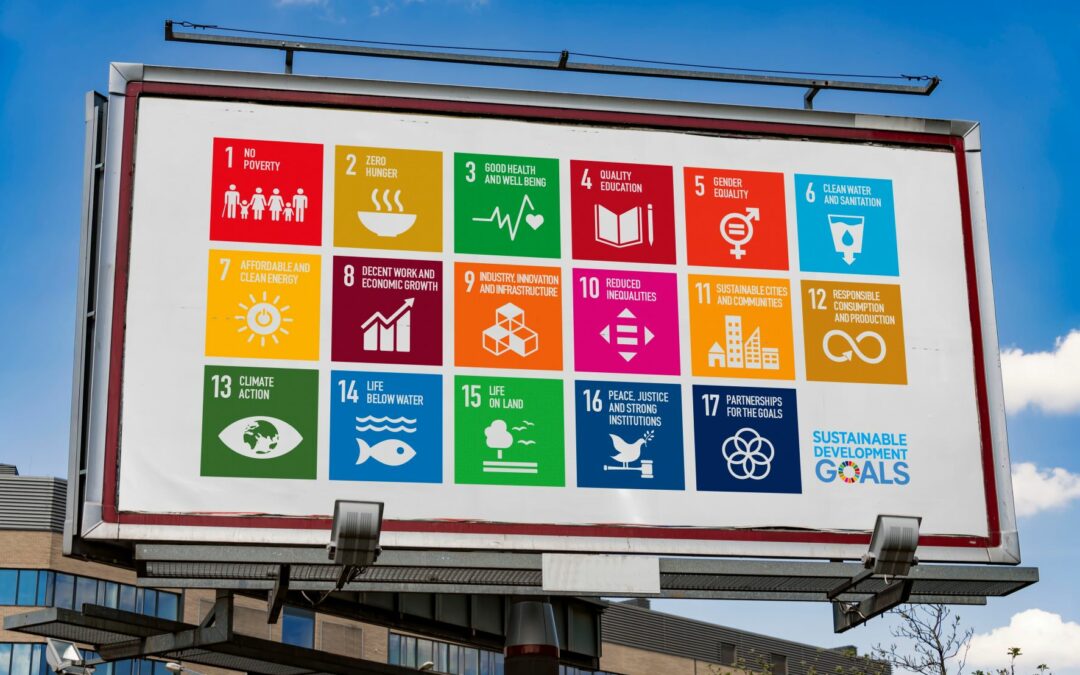Reporting on the Sustainable Development Goals
Advancing the UN’s 17 Sustainable Development Goals requires evidence-based information and advocacy that is widely disseminated and cited. Transdisciplinary approaches are especially required, exemplified in reports from UN agencies, programs, and many NGOs and government agencies. These reports are free online, prepared by groups of experts, well-written with diagrams and executive summaries, and often concern two or more SDGs.
However, they are generally ignored by the major mass media (paying far more attention to commercial books) and academia (paying far more attention to specialized journals, often on trivial topics). Hence, The Report on Recent Reports identifies selected reports and their key concerns and bottom-line messages to remedy this situation. Anyone concerned about the future and global policy should consider them.
2.1 World Population Prospects 2022: Summary of Results (UN Dept of Economic and Social Affairs, July 2022, 40p).
The world population is projected to reach 8 billion on 15 Nov 2022. The latest UN projections suggest growth to 8.5 billion in 2030, 9.7 billion in 2050, and “a peak of around 10.4 billion during the 2080s,” remaining at that level until 2100. Average life expectancy reached 72.8 years in 2019 and is projected to be 77.2 years globally in 2050. Achieving the SDGs is likely to lower fertility and population growth. [NOTE: Wars, pandemics, and global warming will also lower the population.]
2.2 The Sustainable Development Goals Report 2022 (UN Dept of Economic and Social Affairs, July 2022, 65p).
“The world is facing a confluence of crises…addressed holistically in the SDGs. We ignore them at our peril.” But the 2030 Agenda “is in grave jeopardy due to multiple, cascading, and intersecting crises,” notably COVID-19, climate change, and conflict, creating spin-off crises in food, health, education, and security. “A road map for survival” must embark on a path of diplomacy and peace, adopt low-carbon development, transform the global financial and debt structure, invest much more in data and statistics, and scale up international cooperation. [ALSO SEE the SDSN “Sustainable Development Report 2022” (June 2022, 508p, RRR 1.3), mostly devoted to country profiles.]
2.3 The State of the Sustainable Development Goals in the United States (Brookings Institution Center for Sustainable Development and UN Foundation, March 2022, 31p).
Analysis of 49 SDG targets and 56 indicators through 2018 shows that “even before the pandemic, the US was not on track to achieve a single SDG.” The US stands out for “its notable absence in integrating the SDGs into its international assistance” and needs a cabinet-level SDG Council to strengthen domestic and foreign coordination.
2.4 The War in Ukraine: Global Perspectives on Causes and Consequences (Report to the World Academy of Art & Science, CADMUS Special Issue, July 2022, 246p).
The 27 articles include such topics as the new concept of human security (by Federico Mayor), denial of complexity, root causes of Russia’s invasion, moving the world beyond war, deglobalization, the efficacy of sanctions, energy in the new global order, rethinking the SDGs, evolving meanings of the war, an UN-brokered settlement as the least bad option, the need for cooperative security, threats to global academic collaboration, etc.
2.5 Environment of Peace: Security in a New Era of Risk (Stockholm International Peace Research Institute, May 2022, 98p).
“There can be no sustainable development without peace, and no peace without sustainable development…Our world is being drawn into a black hole of deepening twin crises in security and the environment.” Insecurity is rising, while environmental integrity is sinking. Governments are spending in ways that stoke insecurity rather than tackling it, while subsidies fund environmental harm such as fossil fuel use. Global military spending was >$2.1 trillion in 2021, nearly doubling since 2000, while humanity has altered nearly three-quarters of the world’s land surface.
2.6 The Future of Environmental Peacebuilding: Nurturing an Ecosystem of Peace (Geneva Peacebuilding Platform, PeaceNexus Foundation, Environmental Peacebuilding Assn, Environmental Law Institute, and IUCN, 2022, 32p).
This White Paper summarizes a 183p compendium of 50 articles by >150 authors (www.ecosystemforpeace.org ) on the many links between environment and security, e.g. trade in conflict resources finances violence. Challenges for peacebuilding include actual action rarely matching the rhetoric, but new legal processes have documented and aided the importance. An agenda proposes more bottom-up approaches, holding armed groups and companies to account for damage, continuing to build the evidence base, and bridging silos to operate in a peace-positive way.
ALSO SEE: Environmental Peacebuilding – A QuickLook at Leading Organizations (#12 organizations)
2.7 Road to 2023: Our Common Agenda and the Pact for the Future (Washington: The Stimson Center Global Governance & Security Program, June 2022, 89p).
A proposed Sept 2023 UN Summit of the Future on conflict, COVID, climate, and collaboration may result in a Pact for the Future involving a New Agenda for Peace, expanding the Security Council for more collective security, a new Peacebuilding Council and Audit, boosting the International Court of Justice, an International Anti-Corruption Court to combat illicit financial flows, a new UN Emergency Platform to anticipate global shocks, a Global Health Threats Council, a stronger Human Rights Council, a High-Level Civil Society Champion, a UN Youth Office, a Special Envoy for Future Generations, a steward for the Global Commons, Global Forestry Governance, and a Global Funding Compact to leverage public/private partnerships.
2.8 The State of Food Security and Nutrition in the World: Repurposing Food and Agricultural Policies to Make Healthy Diets More Affordable (FAO, IFAD, UNICEF, WFR, and WHO, July 2022, 232p).
The number of people worldwide unable to afford a healthy diet has grown to >3 billion, due to rising consumer food prices. Gains made in reducing the prevalence of child stunting by a third in the past two decades are under threat by the triple crises of climate extremes, conflict, and COVID-19. Government support to food and agriculture accounts for almost $630 billion/year globally, but much of this support distorts market prices, hurts small-scale producers, and is environmentally destructive. “This report shows that governments can invest in agrifood systems equitably and sustainably, even with the same level of public resources,” to make healthy diets more affordable for all. [ALSO SEE “Food Planet Health: Healthy Diets From Sustainable Food Systems” (EAT-Lancet Commission, June 2022, 30p; RRR#1:8) and “Handbook for SDG-Aligned Food Companies: Four Pillar Framework Standards” (Sustainable Development Solutions Network and Columbia Center on Sustainable Investment, Dec 2021, 243p).
2.9 Freedom in the World 2022: The Global Expansion of Authoritarian Rule (Washington: Freedom House, Feb 2022, 34p).
“Global freedom faces a dire threat. Around the world, the enemies of liberal democracy—a form of self-government in which human rights are recognized and everyone is entitled to equal treatment under law—are accelerating their attacks… The present threat to democracy is the product of 16 consecutive years of decline in global freedom. For instance, a total of 60 countries suffered declines over the past year, while only 25% improved.” In 2021, some 38% of the global population lived in Not Free countries, 41% in Partly Free Countries, and only about 20% in Free countries, down from 46% in 2005. The report discusses regional trends, illiberal forces within democracies, dropping the pretense of competitive elections, the proliferation of coups and power grabs, autocratic alliances, global resistance, and effective democracy support. [NOTE: An important, thorough, neglected, and depressing report.]
2.10 Climate Endgame: Exploring Catastrophic Climate Change Scenarios (Luke Kemp and 10 Others, Proceedings of the National Academy of Sciences/PNAS, 119:34, 1 Aug 2022, 9p).
Could anthropogenic climate change result in worldwide societal collapse or even human extinction? There are ample reasons to suspect that climate change could result in a global catastrophe. Yet, “at present, this is a dangerously underexplored topic.” Authors include Johan Rockstrom and Will Steffen.




0 Comments